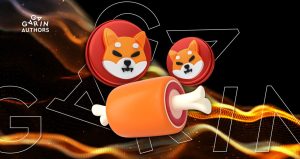Deciphering Crypto Slang: Depth of Market, Whale, Shitcoin

Bitcoin and blockchain technology have garnered attention from a significant number of people across the globe. Nevertheless, engaging with traders or passionate crypto enthusiasts may give the impression that the crypto universe is laden with intricate terms, which can be quite daunting for the layperson to comprehend.
Bull and Bear Markets
A bull market describes a time when investors' enthusiasm leads to more crypto purchases than sales, creating a scenario where demand outstrips supply. On the other hand, a bear market denotes a period of pessimism: investors offload their assets, demand dwindles, and the value of major cryptocurrencies plunges, often by half or more from their highest valuations.
Pump and Dump
Traders often use these terms to denote particular market phenomena like a sudden, spontaneous surge in a crypto asset's price (a pump), or its swift downfall (a dump). There's also a notorious market manipulation strategy known as “Pump&Dump,” where an entity artificially inflates and subsequently deflates the value of an asset for personal gain.
Weak Hands and Diamond Hands
These phrases refer to individuals willing to offload their digital assets amid market panic or, conversely, those steadfast enough to hold onto their assets in the face of severe price swings.
FUD (Fear, Uncertainty, and Doubt)
FUD is a term used to denote a time when a surge of adverse information about cryptocurrencies and blockchain technology emerges. Instances of FUD can include rumors about potential blockchain vulnerabilities or issues concerning the backing of digital assets, such as concerns over USDT's 1:1 peg to the US dollar.
HODL, along with Hodling and Hodlers
HODL, a term dating back to the infancy of crypto, emerged in 2013 due to a Bitcointalk forum user's typographical error. Instead of writing “hold,” they entered “hodl,” which soon became synonymous with ‘hold on for dear life.'
This term now encapsulates a strategy whereby investors (termed hodlers) purchase cryptocurrency with a long-term outlook and have no intentions of selling in the foreseeable future — they're hodling
Whale
This phrase describes large-scale investors who possess a considerable chunk of a particular cryptocurrency's total supply, typically 5% or more.
Shitcoin
This denotes a token devoid of any intrinsic value, lacking in specific utilities, and without sustained demand. This term labels cryptocurrencies that are hyped purely due to subjective reasons, like a tweet from Elon Musk or an orchestrated move by Reddit chat users. Intriguingly, some of these shitcoins might have a market capitalization exceeding that of fundamentally sound projects like Polygon or Polkadot.
FOMO (Fear Of Missing Out)
The Arbitrum project serves as a recent striking example of FOMO. This project rewarded all active participants handsomely. Participants turned investments of several tens of dollars into rewards worth hundreds or even thousands of dollars. As a result, those who knew about the project but didn't get involved experienced FOMO.
Depth of Market
This refers to a ledger of buy or sell orders for digital assets. The term is borrowed from the stock market, where it carries the same meaning but applies to goods, contracts, and securities.
Timeframe
This term indicates a distinct interval or period on a tradable asset's chart. With tools like Tradingview, one can group the price chart over a specific time duration. If you select the H1 interval, each candlestick on the chart will represent a one-hour period.
Candlestick
This is a method of displaying and organizing price movement on a chart over a selected time period, also known as the timeframe.
RR (Risk:Reward)
This term refers to the ratio of potential risk to potential reward when initiating a trade.
Stop Loss
This is an enforced stop to losses, an option of an order to buy or sell. When the price hits the stop loss point, the trade closes at a loss that is acceptable to the trader.
Scalping
This is one of many strategies that involves trading over short timeframes.
Swing
This is the opposite of scalping, where trades can remain open for several days.
POI (point of interest)
This term refers to an area of interest, a point at which a trader decides to open or close a trade.
Of course, these are not all the crypto terms that you might encounter in specialized publications. Traders also use many more specific words related to their individual trading strategies or the type of analysis they employ for trading. This primer should provide you with a deeper understanding of the nuances of the cryptocurrency market.
The content on The Coinomist is for informational purposes only and should not be interpreted as financial advice. While we strive to provide accurate and up-to-date information, we do not guarantee the accuracy, completeness, or reliability of any content. Neither we accept liability for any errors or omissions in the information provided or for any financial losses incurred as a result of relying on this information. Actions based on this content are at your own risk. Always do your own research and consult a professional. See our Terms, Privacy Policy, and Disclaimers for more details.



























